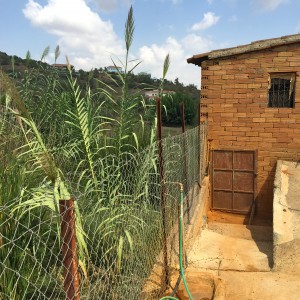Today we are sharing the third instalment from the Archnetwork Erasmus+ course, Empowering Communities in Cyprus.
Thursday 17th September 2015. Today was a hands-on day. In the morning we journeyed 25 minutes north east of Lefkara, to the small village of Kornos.  Here we were greeted by the wonderful, women of the pottery cooperative. They provided us with a demonstration of their pot making techniques and the opportunity to make our own using the rich red terracotta clay. Coffee was served and through translation we exchanged lots of information. The unprocessed clay sat in mound by the side of the road which I found curious, so I enquired about it’s preparation, as it is heavy work. A tour of the clay mill & machinery ensued and it was explained that a local man helped with this. We looked around the store room full of fired pots in all shapes and sizes, from bee hives to cooking pots. We saw their working electric kiln. There was also an unmissable 200 year-old, brick-built, wood-fired kiln – a thing of beauty in need of restoration, which is planned. Another more dilapidated kiln sat crumbling behind the main building, seemingly beyond repair.
Here we were greeted by the wonderful, women of the pottery cooperative. They provided us with a demonstration of their pot making techniques and the opportunity to make our own using the rich red terracotta clay. Coffee was served and through translation we exchanged lots of information. The unprocessed clay sat in mound by the side of the road which I found curious, so I enquired about it’s preparation, as it is heavy work. A tour of the clay mill & machinery ensued and it was explained that a local man helped with this. We looked around the store room full of fired pots in all shapes and sizes, from bee hives to cooking pots. We saw their working electric kiln. There was also an unmissable 200 year-old, brick-built, wood-fired kiln – a thing of beauty in need of restoration, which is planned. Another more dilapidated kiln sat crumbling behind the main building, seemingly beyond repair.
The shop also served as a make shift museum, displaying photographs of the potters throughout the 20th Century when it was a much larger concern, employing many more villagers and supporting more families. Today there are no young people joining the Kornos pottery or learning the skills, so it’s long term future is uncertain.
 The pottery workshop facilities were very basic, partially in the open air. As we were working it struck me, the pace at which the potter’s could complete an entire pot was hastened because of the warmer climate allowed the clay to firm up much quicker than the UK. Paired with their perfectly honed building skills, the potters could produce a complete decorated piece in under an hour, to await firing in the kiln.
The pottery workshop facilities were very basic, partially in the open air. As we were working it struck me, the pace at which the potter’s could complete an entire pot was hastened because of the warmer climate allowed the clay to firm up much quicker than the UK. Paired with their perfectly honed building skills, the potters could produce a complete decorated piece in under an hour, to await firing in the kiln.
I also asked about the potters’ health, if anyone suffered from chest complaints from the clay dust, which can cause silicosis, they all shook their heads. The workshop had no extraction system, which is mandatory for health & safety in the UK. Then again, the workspace was open and ventilated by nature. I thoroughly enjoyed revisiting my pot making skills as well as meeting these great people.
In the afternoon we returned to Lefkara clutching our unfired earthenware.  It was time to apply more dexterity and attempt some Lefkara lace making. Panayiota was our patient teacher and she started us off by showing the margarite pattern. This geometric design requires precision embroidery, good eyesight for counting warp & weft threads and for a beginner, vast amounts of concentration. The instructions made perfect sense but putting it into practice was another matter. The lesson made us all appreciate Lefkaritika that wee bit more.
It was time to apply more dexterity and attempt some Lefkara lace making. Panayiota was our patient teacher and she started us off by showing the margarite pattern. This geometric design requires precision embroidery, good eyesight for counting warp & weft threads and for a beginner, vast amounts of concentration. The instructions made perfect sense but putting it into practice was another matter. The lesson made us all appreciate Lefkaritika that wee bit more.
Imagery © J.Sangster

